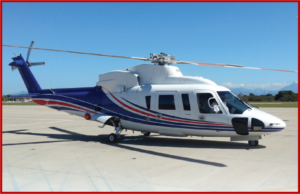 Helicopter accidents and fatal helicopter accidents fell for the third consecutive year, according to the FAA (Federal Aviation Administration). The overall accident rate at 3.19 accidents per 100,000 flight hours in 2016 compares with 3.67 accidents in 2015. The fatal accident rate declined slightly at 0.51 accidents per 100,000 flight hours in 2016 compared with a 0.52 in 2015. However, this is down from 0.65 in 2014 and 1.02 in 2013. In total, there were 106 helicopter accidents in 2016, including 17 fatal accidents. That is a 12% decrease compared to the previous year and a 27% decrease compared to 2013.
Helicopter accidents and fatal helicopter accidents fell for the third consecutive year, according to the FAA (Federal Aviation Administration). The overall accident rate at 3.19 accidents per 100,000 flight hours in 2016 compares with 3.67 accidents in 2015. The fatal accident rate declined slightly at 0.51 accidents per 100,000 flight hours in 2016 compared with a 0.52 in 2015. However, this is down from 0.65 in 2014 and 1.02 in 2013. In total, there were 106 helicopter accidents in 2016, including 17 fatal accidents. That is a 12% decrease compared to the previous year and a 27% decrease compared to 2013.
The FAA and the helicopter industry have worked together to educate the civil helicopter community about safe practices, to drive these improved results,” said FAA Administrator Michael Huerta. “The FAA and the industry also are taking an active role in advancing safety through new technology, collaborative policy changes and proactive outreach.”
The FAA encourages helicopter companies and individual pilots to promote safety in the workplace. Efforts include establishing a system where anyone can report an unsafe condition without fear of reprisal, making every employee a champion of safety, and establishing safety training programs for mechanics, pilots and other employees.
The FAA issued the Non-Required Safety Enhancing Equipment policy in 2013. It allows operators and manufacturers to install safety equipment through a streamlined and less expensive approval process. The policy seeks to strike a balance between risk and safety through a “common-sense” approach.
The FAA also mandated that the Automatic Dependent Surveillance Broadcast system – ADS-B – be installed in U.S. helicopters by 1 January 2020 if they intend to operate in busy airspace. ADS-B’s satellite-based technology can provide three-dimensional information – latitude, longitude, altitude – about a helicopter’s position, along with information about its direction and size, without the geographic drawbacks posed by radar and low flying helicopters.
In addition, the FAA required in 2014 that certain (Part 135) commercial helicopter operators, including air ambulances and air taxis, have stricter flight rules and procedures, improved communications, training, and additional on-board safety equipment.

